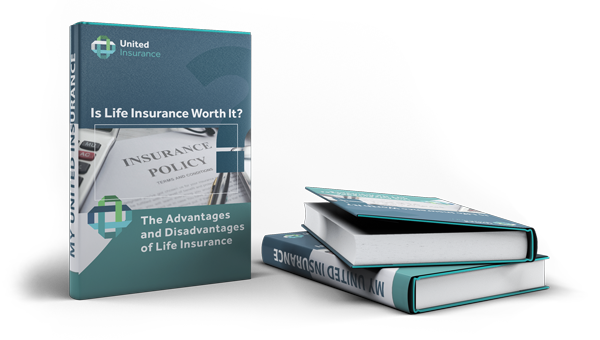
When it comes to whole life and permanent life insurance, the cash value is one of the most important features. This is because it can be used for a variety of purposes. A few are, supplementing retirement income, paying for college tuition, or even taking out a loan. In this blog post, we will discuss the importance of cash value. We will discuss why it should be a key consideration when purchasing life insurance.
Key Feature
Another key characteristic of permanent insurance is a feature known as cash value or cash surrender value. Permanent insurance is often referred to as cash-value insurance. This is because these types of policies can build cash value over time. They can also provide a death benefit to your beneficiaries.
Cash values, which accumulate on a tax-deferred basis just like assets in most retirement and tuition savings plans, can be used in the future for any purpose you wish. If you like, you can borrow cash value for a down payment on a home. You can also help pay for your children’s education or to provide income for your retirement. When you borrow money from a permanent insurance policy, you’re using the policy’s cash value as collateral. Usually the borrowing rates tend to be relatively low. And unlike loans from most financial institutions, the loan is not dependent on credit checks or other restrictions. You ultimately must repay any loan with interest. And, If you don’t repay, your beneficiaries will receive a reduced death benefit and cash surrender value.

If you need or want to stop paying premiums, you can use the cash value to continue your current insurance protection for a specified time or to provide a lesser amount of death benefit protection covering you for your lifetime. Also, if you decide to stop paying premiums and surrender your policy, the guaranteed policy values are yours. Just know that if you surrender your policy in the early years, there may be little or no cash value.
Cash Value vs Face Amount
With all types of permanent policies, the cash value of a policy is different from the policy’s face amount. The face amount is the money that will be paid at death or policy maturity. Most permanent policies typically “mature” around age 100. This is the amount available if you surrender a policy before its maturity or your death. Moreover, the cash value may be affected by your insurance company’s financial results or experience. This can be influenced by mortality rates, expenses, and investment earnings.
“Permanent insurance” is a catchall phrase for a wide variety of life insurance products that contain the cash-value feature. Within this class of life insurance, there is a multitude of different products. Here we list the most common ones.
Ordinary Life
If you’re the kind of person who likes predictability over time, whole life insurance might be right for you. It provides you with the certainty of a guaranteed amount of death benefit and a guaranteed rate of return on your investment. And you’ll have a level premium that is guaranteed to never increase for life.
Another valuable benefit of a participating whole life policy is the opportunity to earn dividends. While your policy’s guarantees provide you with a minimum death benefit and cash value, dividends allow you to receive an enhanced death benefit and cash value growth. Dividends are a way for the company to share part of its favorable results with policyholders. When you purchase a participating policy, it is expected that you will receive dividends after the second policy year – but they are not guaranteed. Dividends, if left in the policy, can provide an offset (and more) to the eroding effects of inflation on your coverage amount.
Variable Life
Variable Life insurance is offered via a prospectus and provides death benefits and cash values that vary with the performance of a portfolio of underlying investment options. You can allocate your premiums among a variety of investment options offering different degrees of risk and reward: stocks, bonds, combinations of both, or a fixed account that guarantees interest and principal.
This type of insurance is for people who are willing to assume investment risk to try to achieve greater returns. With Variable Life, you’re shifting much of the investment risk from the insurance company to yourself. Good investment performance would provide the potential for higher cash values and ultimate death benefits. If the specified investments perform poorly, cash values and death benefits would drop accordingly.
Universal Products
Unlike whole life and variable life where you pay fixed premiums, universal life offers adjustable premiums that give you the option to make higher premium payments when you have extra cash on hand or lower ones when money is tight.
Universal life allows you, after your initial payment, to pay premiums at any time, in virtually any amount, subject to certain minimums and maximums. You also can reduce or increase the death benefit more easily than under a traditional whole-life policy.
Most universal life policies will also provide a guaranteed rate of return on your cash values, with one important exception. It is possible that you will not accumulate any cash value if any, or all, of the following circumstances occur: administrative expenses increase, mortality assumptions are changed, the insurance company’s investment portfolio underperforms, and premium payments are insufficient.

Bottom Line
Permanent life insurance is a type of coverage that remains in effect for your entire life as long as you pay the premiums. It has two main features: a death benefit and cash value. The death benefit is the stated amount that will be paid out to your beneficiaries upon your death. This coverage is essentially a savings account within the policy that grows over time and that you can access while you are alive. The cash value is one of the key reasons people purchase whole life insurance, as it can be used for a variety of purposes, such as supplementing retirement income or paying for college tuition.
Reach out to one of our licensed Life Agents for more information.
